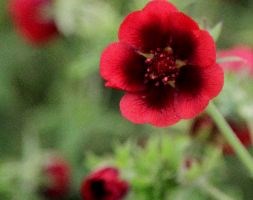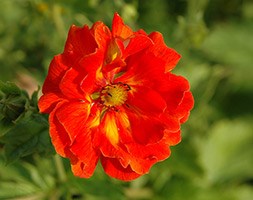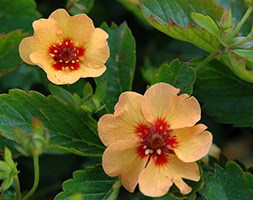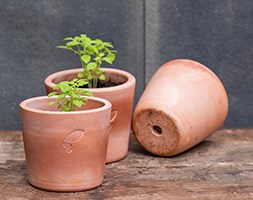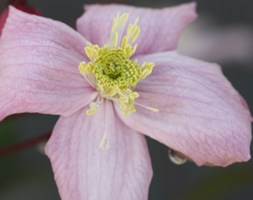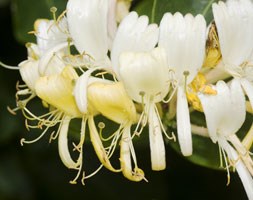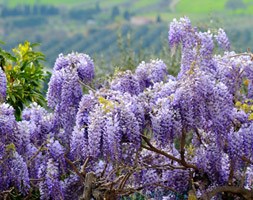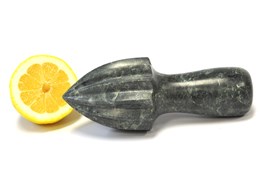Price reductions at Crocus
by Sarah - February 25th, 2015.Filed under: Crocus, Price Reductions.
Crocus reduced the price on these products today
Potentilla thurberi ‘Monarch’s Velvet’ (cinquefoil) was £2.49 now £1.99
Position: full sun Soil: poor to moderately fertile, well-drained soil Rate of growth: average Flowering period: June to August Hardiness: fully hardy Ravishing, rich raspberry red flowers with deep velvet red centres from June to August and hairy, strawberry-like leaves. This red cinquefoil is a fabulous, long flowering plant for a sunny herbaceous or cottage style border. One of the most attractive varieties currently available, for maximum success chose a site that doesn’t get waterlogged in winter. Garden care: Lift and divide large clumps in autumn or spring. Apply a generous 5-7cm (2-3in) mulch of well-rotted compost or manure around the base of the plant in spring
Potentilla ‘William Rollisson’ (cinquefoil) was £2.49 now £1.99
Position: full sun Soil: poor to moderately fertile, well-drained soil Rate of growth: average Flowering period: June to August Hardiness: fully hardy Vibrant semi-double, red orange flowers, each with a yellow eye appear from June to August above the hairy, strawberry-like leaves. This beautiful, bicoloured potentilla is a valuable transitional plant, working well with and tying together yellow, orange and scarlet flowers. Disease free and easy to grow, it’s perfect for a sunny, well-drained site. Garden care: Lift and divide large clumps in autumn or spring. In spring apply a generous 5-7cm mulch of well-rotted garden compost or manure around the base of the plants
Potentilla x tonguei (cinquefoil) was £2.49 now £1.99
Position: full sun Soil: poor to moderately fertile, well-drained soil Rate of growth: average Flowering period: June to August Hardiness: fully hardy Spreading stems are clothed with rich green divided foliage forming handsome groundcover, which is topped with red-eyed apricot flowers throughout summer. An easy-going ground-covering plant that will happily colonise a sunny spot at the front of the border. Garden care: Lift and divide large clumps in autumn or spring. In spring apply a generous 5-7cm (2-3in) mulch of well-rotted garden compost or manure around the base of the plants.
3 Terracotta seedling pots was £5.99 now £4.99
Dimensions: Height: 10cm Rim diameter: 11cm Base diameter: 9cm We think these classic, unfussy designs work best in an English garden. Although the in spiration came from Tuscany, the pots have been made in Turkey. They are hand th rown (sometimes from 2 pieces of clay for the larger pots) by Argun and his son who are the 3rd and 4th generation of potters from the Izmir region on the Aege an coast. The clay from this area ages to a lovely patina, as the salts slowly l each to the surface. Each pot is fired to 1080 degrees C to make them as frost resistant as possible. We would, however, always suggest that, just to be extra safe, in the very cold months that you move empty or full pots into a sheltered spot. Our pots are all hand thrown so each pot is slightly different in thickness and shape which gives them their unique character.
Spathiphyllum (spathiphyllum) was £9.99 now £6.99
Position: bright but indirect light Soil: fertile: good potting compost Rate of growth: Quick growing Hardiness: tender (indoors only) Current height: approximately 30cm (including pot) Home care:
Clematis ‘Elizabeth’ (clematis (group 1)) was £12.99 now £9.99
Position: full sun or partial shade Soil: fertile, well-drained, neutral soil Rate of growth: fast-growing Flowering period: May to June Flower colour: soft pink Other features: N/A Hardiness: fully hardy Sweetly scented, large, soft pink flowers with golden-yellow centres in May and June and purple-flushed, mid-green leaves. This fast-growing clematis is excellent for training over a pergola or covering an unsightly wall or fence in a north-facing site. Plant near an entrance or path where the delicate almond fragrance can be appreciated. Garden care: No routine pruning is necessary. If the spread of the climber needs to be restricted prune immediately after flowering, cutting back overlong shoots to healthy buds. Apply a slow-release balanced fertiliser and a mulch of well-rotted garden compost around the base of the plant in early spring.
Lonicera periclymenum ‘Heaven Scent’ (English wild honeysuckle) was £12.99 now £9.99
Position: full sun or partial shade Soil: fertile, humus-rich, moist, well-drained soil Rate of growth: fast-growing Flowering period: June to September Hardiness: fully hardy A robust, deciduous climber which is a cottage garden classic. From midsummer to early autumn they produce very fragrant yellow flowers with tones of pinkish salmon that fade with age. They are then followed by bright, shiny red berries. Garden care: Cut back established plants after flowering if they become too rampant, removing a third of the flowering shoots. Apply a generous 5-7cm (2-3in) mulch of well-rotted compost or manure around the base of the plant in early spring.
Wisteria sinensis (Chinese wisteria) was £14.99 now £12.49
Position: full sun or light, dappled shade Soil: fertile, moist, well-drained soil Rate of growth: fast-growing Flowering period: May to June Flower colour: bluish-lilac Other features: velvety, green seed-pods in hot summers; all parts of the plant are harmful if ingested Hardiness: fully hardy Pendant clusters of fragrant, pea-like, bluish-lilac flowers in May and June, often followed by velvety-green seed-pods. This vigorous Chinese wisteria looks fabulous trained over a sunny wall or strong pergola. Renowned for its superior fragrance and flower-colour, the twining stems need careful pruning. All the Wisterias we sell are grafted, so will start to flower at a younger age than those grown from cuttings. Garden care: To get lots of flowers, the twining stems need pruning twice a year – once in summer (about two months after the flowering has finished) and again in mid-winter. To train your Wisteria against a wall, the wall will first need a network of stout horizontal wires, attached at approximately 30cm intervals. After planting, prune the leading shoot of your Wisteria back to approximately 90cm above ground level and remove any side branches as this will encourage a strong new leader to form. In the summer of the first growing season, tie the leader in vertically and choose two new lateral shoots on either side of the leader. Tie these onto the wires at a 45 degree angle. Any smaller shoots coming from these lateral branches should be cut back to two or three buds. In the first winter, cut back the leader to a bud approximately 75cm above the highest lateral branch. Gently untie the lateral branches and prune them back by about a third, then re-tie them onto a wire so they are nearly horizontal. In subsequent summers (and until the plant has filled the allotted space), tie in the leader as it grows and choose two strong laterals to form the next tier. These should then be tied in at a 45 degree angle and as in the previous year, any smaller shoots coming from these should be cut back to two or three buds. In subsequent winters cut back the leading shoot as before and cut back and re-tie the new laterals to a near-horizontal position. The older laterals can be cut back by about a third of their total length. Once the plant has become established and reached the desired height, keep tying in the lateral stems as they spread out. In summer, cut back the wispy stems on both the laterals and sub-laterals (the
Lemon reamer was £19.99 now £14.99
The traditional design of this juicer is very practical, making it easy to use, while the marble can be cleaned quickly after use. Dimensions: Length – 17cm







